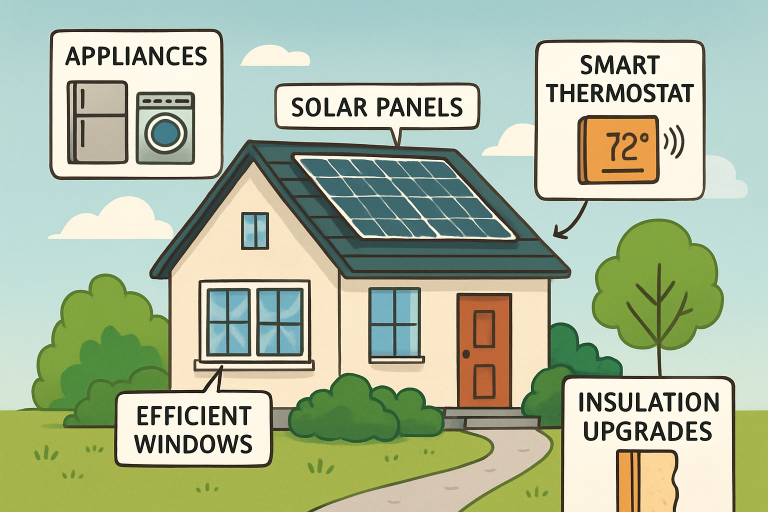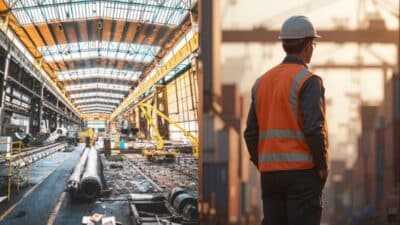Key Takeaways
- Energy-efficient upgrades can produce significant, ongoing savings through reduced utility costs. Upgrades tend to pay for themselves by cutting waste and making your home more comfortable year-round.
- Popular improvements like high-efficiency heat pumps, new insulation, and solar energy add both economic and environmental benefits, enhancing your quality of life while respecting the planet.
- Homeowners can leverage federal tax credits and local offers to lessen initial upgrade costs, amplifying the value of every improvement. Research which incentives apply in your area to maximize returns.
Introduction


Homeowners are increasingly choosing to improve their energy efficiency to save money, reduce resource consumption, and contribute to a healthier planet. With rising energy costs and climate change concerns, homeowners are seeking sustainable solutions. From HVAC services that optimize heating and cooling performance to other simple fixes and advanced upgrades, these improvements can be tailored to individual needs, budget, and long-term goals. Proactive upgrades can be incentivized by federal and local programs, providing substantial returns over time. These investments can transform homes into future-ready, environmentally conscious havens, with programs like federal tax credits, rebates, and utility incentives making the transition more affordable.
Upgrade to High-Efficiency Heat Pumps
Switching to high-efficiency heat pumps can significantly reduce energy usage for heating and cooling. Heat pumps operate by transferring heat, making them up to three times more efficient. They can heat and cool a home in winter and summer, making them a versatile year-round solution. Upgrading to an electric heat pump can recover up to 104% of the investment at resale while providing lower bills and consistent indoor comfort. These systems are also environmentally friendly, especially when paired with renewable electricity sources, and may qualify for special rebates and incentives.
Enhance Insulation and Seal Air Leaks
Poor insulation and unsealed gaps in older homes contribute to energy loss, with only 20% of homes built before 1980 having sufficient insulation. Upgrading attic and wall insulation, sealing cracks around doors, windows, and utility penetrations, and addressing unsealed gaps can significantly improve comfort and finances. These steps offer fast and affordable energy savings, with a 95% payback on investment. For homeowners interested in leading-edge materials, spray foam, blown-in cellulose, or fiberglass provide excellent coverage and durability. Even covering basement band joists or crawl spaces can reveal substantial benefits.
Install Energy-Efficient Windows
Modern energy-efficient windows, using advanced technology like multiple panes and low-emissivity coatings, can help maintain a comfortable interior climate, especially during harsh weather conditions. Replacing old, leaky windows with high-performance options not only improves insulation but also reduces heating and cooling system demand. These windows also contribute to a quieter indoor environment by reducing outside noise and blocking harmful ultraviolet rays that can fade furniture and flooring. This results in ongoing savings and improved living conditions year-round, as supported by reports from Realtor.com.
Adopt Solar Energy Solutions


Solar panels are a cost-effective and efficient way to cut electricity bills over time. They convert sunlight into clean, renewable energy, transforming it into clean energy on your rooftop. With various incentives, the return on investment is stronger than ever. Solar panels not only save homeowners from utility rate hikes but also boost property values. The National Renewable Energy Laboratory states that for every dollar saved on electricity, a property’s value increases by about $20. Pairing solar arrays with home battery storage increases flexibility and energy security. Many regions also offer net metering, allowing for excess power sales back to the grid.
Utilize Smart Thermostats
Smart thermostats are advanced devices that learn habits, observe occupancy patterns, and can be monitored remotely. They can optimize heating and cooling, reducing energy waste during periods of inactivity or when not in use. The EPA estimates that installing a smart thermostat can reduce utility costs by up to 8%. Some brands offer customized energy reports, allowing users to track progress and set new goals. These devices integrate seamlessly with other smart home systems for increased efficiency and comfort.

Upgrade to Energy-Efficient Appliances
Replacing aging appliances with modern, Energy Star-certified models can significantly reduce household energy and water usage. These appliances use efficient motors, insulation, and control systems, requiring less power to operate. This not only lowers utility bills but also prevents breakdowns and repairs, providing peace of mind for busy families. Real estate market analysis suggests that investing in energy-efficient appliances increases a home’s value by 6% to 8%, making it a dual-purpose upgrade for current enjoyment and future resale.
Consider Water-Saving Fixtures
WaterSense fixtures are designed to reduce water consumption without compromising performance. Installing efficient showerheads, aerated faucets, and low-flow toilets can significantly reduce annual water usage. By curbing hot water demand, they also reduce the energy needed to heat it, resulting in savings. These products can lower household water use by 20% or more, shrinking utility bills and supporting water conservation goals.
Leverage Financial Incentives
Homeowners can offset the upfront costs of energy-saving upgrades with various incentive programs, including federal tax credits like the Residential Clean Energy Credit, which covers up to 30% of the cost for solar panels or home battery installations. Other incentives include rebates for advanced HVAC systems, insulation, modern windows, and efficient appliances. The U.S. Department of Energy offers a comprehensive list of programs and incentives to make these changes more affordable. Investing in energy-efficient upgrades leads to lower bills, a higher-value property, and reduced environmental impact, making them wise choices for modern homeowners.
- 29shares
- Facebook0
- Pinterest29
- Twitter0



